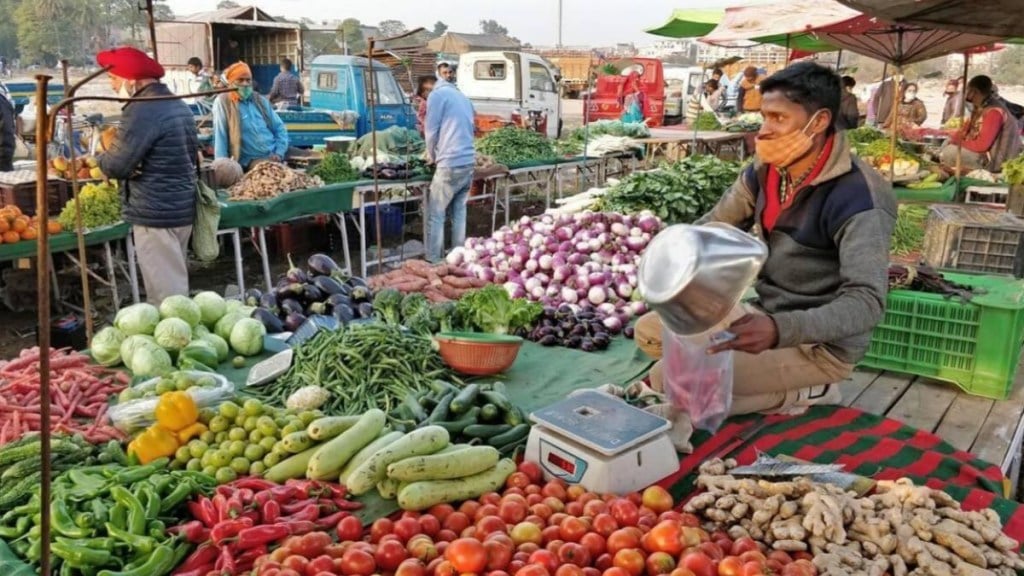Economists said that rising food prices has pushed headline inflation to 4.81 per cent in June 2023 for the first time in five months, adding that the Consumer Price Index (CPI) is now responding more to sequential price movements. The retail inflation had declined to a 25-month low of 4.25 per cent in May on account of softening prices of food and fuel items. It was at 4.7 per cent in April, 5.66 per cent in March, 6.44 per cent in February, 6.52 per cent in January. “June headline inflation surprised on the upside led by rising food prices, while core inflation moderated marginally,” said Upasna Bhardwaj, Senior Economist, Kotak Institutional Equities, adding that the favourable base effect will remain in play in 2QFY24. “Favorable base effects will remain in play in 2QFY24, but will continue to fade. Further, upside risks remain from uncertainty on the monsoon outturn. We revise up our FY2024 headline inflation estimate to 5.1 per cent,” said Upasna Bhardwaj.
Nikhil Gupta, Chief Economist, MOFSL Group, added, “The rising tomato prices, surge in milk prices and higher meat and fish inflation could lead to upward revision in 2QFY24 forecasts (5.2 per cent by the RBI and 4.9 per cent is the market consensus).”
In June 2023, the food and beverages inflation rate was at 4.63 per cent, pan, tobacco, and intoxicants inflation rate came in at 3.65 per cent, clothing and footwear inflation was at 6.19 per cent, and housing inflation stood at 4.56 per cent. Fuel and light inflation were at 3.92 per cent, and miscellaneous saw inflation of 5.19 per cent.
Weather disruption at play
Climate change in India is changing the weather patterns which is impacting the inflation rate directly. The country has been a witness of extreme weather events recently with heatwaves during March and heavy rainfall in northern India. July rainfall in Himachal Pradesh, Haryana, Punjab, Rajasthan, Uttarakhand and Uttar Pradesh is substantially higher than normal. Surplus rains have disrupted the supplies and led to submerging of standing crops such as vegetables and paddy in many parts of northwest India. Agriculture ministry officials has said that despite overall surplus in the monsoon rains so far, there has been deficiency in precipitation in the key paddy growing states of Bihar, Jharkhand, West Bengal, Odisha and Telangana where transplantation has been delayed.
Economists added that the rise in food prices is further amplified by the weather-disruption in the country. “We believe monsoon disturbances, amid already high inflation rates for certain commodities, are lending an upside to the inflation outlook. However, for now, we continue to retain our inflation forecast at 5 per cent CPI inflation average for fiscal 2024 (vs 6.7 per cent last fiscal),” said Dharmakirti Joshi, Chief Economist, CRISIL. While July and August are critical months of agriculture, CRISIL economists will keep an eye on how the weather disruption pans out. If the spatial distribution of rainfall remains skewed, it could have an adverse impact on kharif sowing and further aggravate food inflation. “As in the past, fiscal policy interventions via price stabilisation measures (such as release of stocks, facilitating imports, restrictions on hoarding) could be deployed to contain abnormal price spikes,” he said.
The impact of inflation on RBI MPC stance
Most economists believe that while the inflation rate will certainly remain sticky, it will not prompt the Reserve Bank of India (RBI) for another rate hike. “We maintain our call of a prolonged pause by the RBI as they evaluate the growth-inflation mix and global monetary policy cycle. Further, we expect the RBI MPC to maintain their policy stance at least until October 2023 as liquidity conditions are expected to remain comfortable,” said Upasna Bhardwaj. She added, “With waning favourable base effects, inflation has bottomed out in 1QFY24 and will likely average 5.3 per cent in 2Q-4Q FY24.”
The RBI, in June, decided to keep the policy repo rate unchanged at 6.5 per cent and to remain focused on withdrawal of accommodation to ensure inflation aligns with the target while supporting growth. Meanwhile earlier last month, the US Fed maintained the current level of US interest rate, while indicating more increase given the hawkish projections for the economy. Following 10 consecutive rate increases over the previous 15 months, the Federal Reserve maintained the Fed Funds target rate at 5-5.25 per cent. “In conjunction with two more rate hikes by the Fed, can the RBI deliver a surprise rate hike? Well, this is not our base case but we will be watching very closely,” said Nikhil Gupta.

